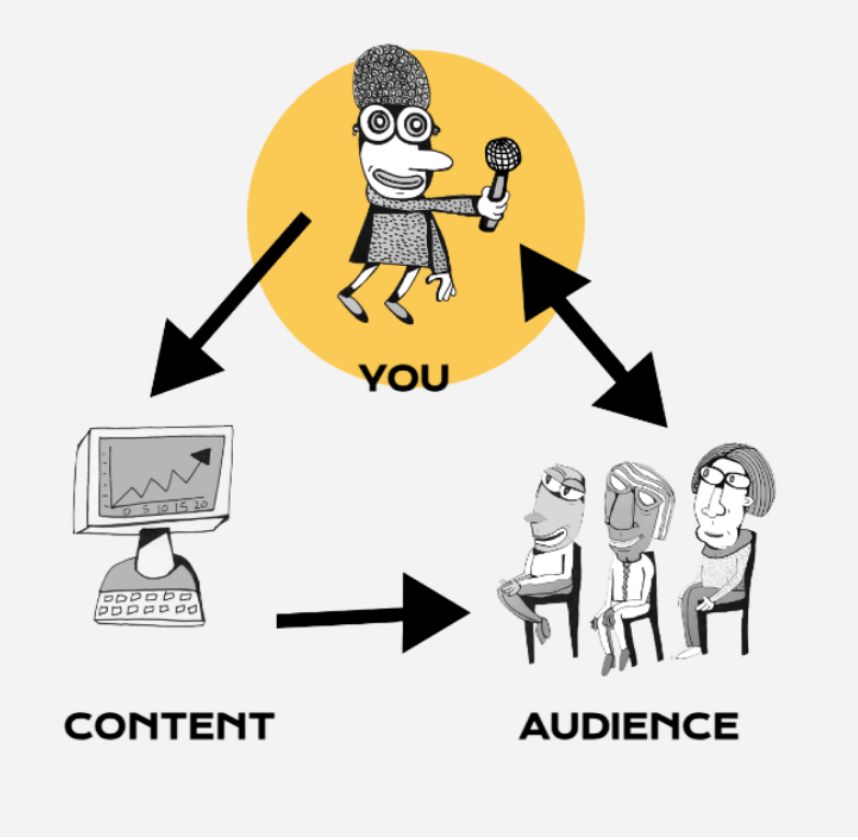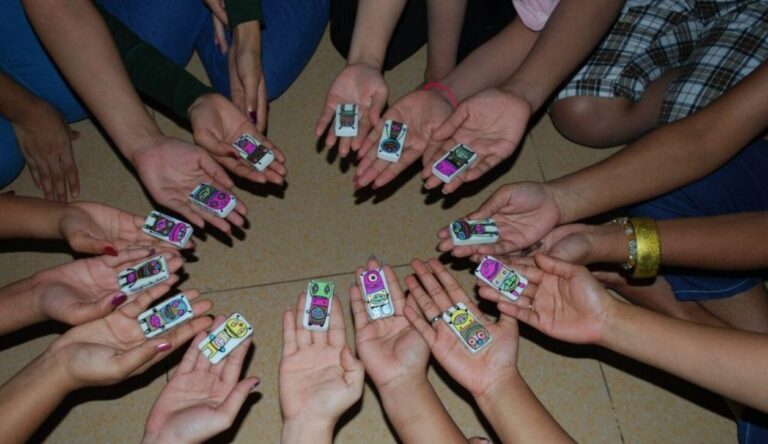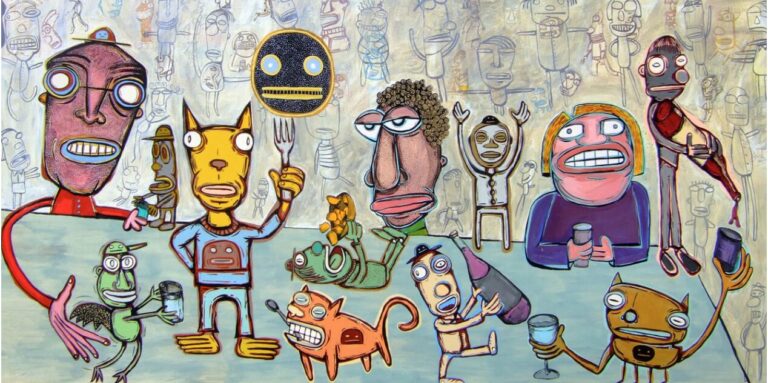Have you ever witnessed a presentation that has gone completely off the rails? The kind where you snap out of a day dream and realize that you have spent the last 10 minutes staring at the weave of the carpet with your mouth slightly agape as the presenter plows through their content (and slides), and then turning to see your fellow audience members asleep or heads bowed to the cell phone gods?
This happens all the time and it’s a weird dynamic. The presenter has no idea that they have lost all relevancy and you sit silently enduring this out of politeness, cultural norms, or the inability to make it to the exit without being seen.
This doesn’t happen between people that know each other. There is a relationship. If a friend, colleague or acquaintance is talking about an irrelevant topic or droning on about something that you’re not interested in, there are a whole slew of social and culture cues that can stop this from turning into something excruciating. We pick up on facial expressions and eye contact (or lack there of) and these bring us back into connection. When I drone on about sharks to my neighbor (I love sharks) and I notice him fidgeting or breaking eye contact, a tiny thought or even a subconscious signal appears in my head that says, “you’ve lost him”, or “he’s not interested”. I’ll then adjust. I might even ask, “do you like sharks?” I reengage with him as an audience instead of simply being engaged with my own material.
But as soon as we get up on stage to present all of these social and cultural cues go out the window. The lights are bright so we can’t see any cues from the audience. It actually takes time for our words to move from our mouth to the audience’s understanding. We look to unreliable audio hints from the audience to inform us, like laughter or movement. We are trained talk at instead of talking with our audience. Combine all of this with the fact that most of us don’t like to stand up in front of an audience at all, and you can see how this disengagement cocktail gets created.
This can start way before we ever get in front of an audience, during the design of our presentation. As most presenters get ready, they think a lot about themselves: Will they look smart, interesting, charming, stupid? And mostly, will they be credible, and be seen as an expert? Because of this, they get super focused on their content, making sure they can answer any question that is asked, that the slides are perfect, and that they really know their stuff. The consequence of this is that they get up in front of their audience focusing on themselves and then download a fire hose of information and slides at their audience. We tried to capture this dynamic in the diagram below called the Blakesly Triangle (named after an early client, Steven Blakesly, who demanded that presenters in his company stop putting their audiences to sleep, and start paying attention to them instead). This shows the normal state of mind of most presenters. Starting with themselves , then focusing on the content and finally delivering that to the audience what is often neglected is the relationship and flow between audience and presenter.

So what to do? How do we navigate all of these communication handicaps that accompany presenting? I think the answer lies in getting curious. Specifically getting curious about your audience. Who are they, want keeps them up at night, gets them out of bed in the morning? What do they want?
But curiosity isn’t enough if you don’t actually try and find out the answers. It doesn’t work to pose these questions and then answer them yourself, making assumptions, or relying on past experience.
I present to a lot of organizational teams, so it’s easy for me to fall into the trap that all of these audiences have the same needs and issues.
There is a facilitation master trainer named Thiagi who says “if you want to know what your audience wants, you should….ask them.”
Obvious and brilliant advice, but how do you have a conversation with your audience so you can gain greater understanding? Here are two easy ways:
Pre-interview your audience. At On Your Feet, we will often pre-interview a cross section of our actual audience before the presentation, we’ll ask them questions about what is working and what is challenging around the topic (collaboration, living the values, creativity, engagement, etc). These are brief 30 minute conversations and they provide invaluable information that help us customize the presentation to meet the needs of that particular audience.
Talk to your audience as they come into the room. Often pre-interviews aren’t practical. Your audience just may not be accessible ahead of time. If so, simply talk to them as they file into the room. Tell them you are presenting and have some questions about their experience. Audiences are happy to do this, but presenters often feel like they have to stay back stage like performers or magicians and never interacting before hand.
There are a few other ways that you can get curious with your audience in order to meet their needs. These require flexibility and a bit of improvisation as a presenter:
Assess the room in the moment: We were working with a presenter who was giving a high stakes presentation at a sales conference. He prepared his presentation in a bubble, not checking in with his audience about their needs and issues. At the top of his presentation he said, “here’s what I think I know about you”, listing a few of his assumptions. He then did something that allowed him to assess the room in the moment. He said, “What don’t I know?” What he heard was that there had been a recent disruption to the market and stress levels where high because of this. This presenter happened to know something about this disruption, so he switched off his projector, grabbed a flip chart and gave an improvised presentation on this new, but much more relevant topic. He got one of the top scores at the sales conference that year.
2. Give your audience a choice. I just returned from presenting at a two day conference which consisted of 25 different speakers, each presenting for 25 minutes. I was the last speaker on the last day. When I found out that I would be presenting last, I saw it as an offer that couldn’t be ignored. So when it was my turn I stood up on stage and gave the audience a choice. They could either hear my talk which would give them new ideas and content, or I could help facilitate a 25 minute session that would help them reflect on the last 24 speakers and figure out how they could use and apply this content. So the choice was new stuff or application. I used the unscientific method of having them scream out which of these they wanted. It was close, but new stuff won out in the end. I was happy to have it gone either way as long as I was serving their needs.
One other example is the above diagram. We presented at a conference where we were on stage for multiple, 15-minute intervals. We were prepared to deliver experiences and content on any of the four areas listed above, so we simply asked the audience what they needed in that moment and based on what they told us we delivered an experience of connection, play, reflection, or learning.
All of these methods require flexibility and comfort with ambiguity, but the rewards make them worth experimenting with. With a little effort your audience will feel seen, feel that they matter, and your content will be more useful. So far, the feedback we have received from this emergent design has be overwhelmingly positive. It is also a ton of fun as well.
Gary Hirsch is the co-founder of On Your Feet a consultancy that uses improv to help organizations create, communicate, and collaborate. He is also the founder of Botjoy, a visual experiment in co-creation. Read more from Gary on the On Your Feet blog. You can reach him at gary@oyf.com



